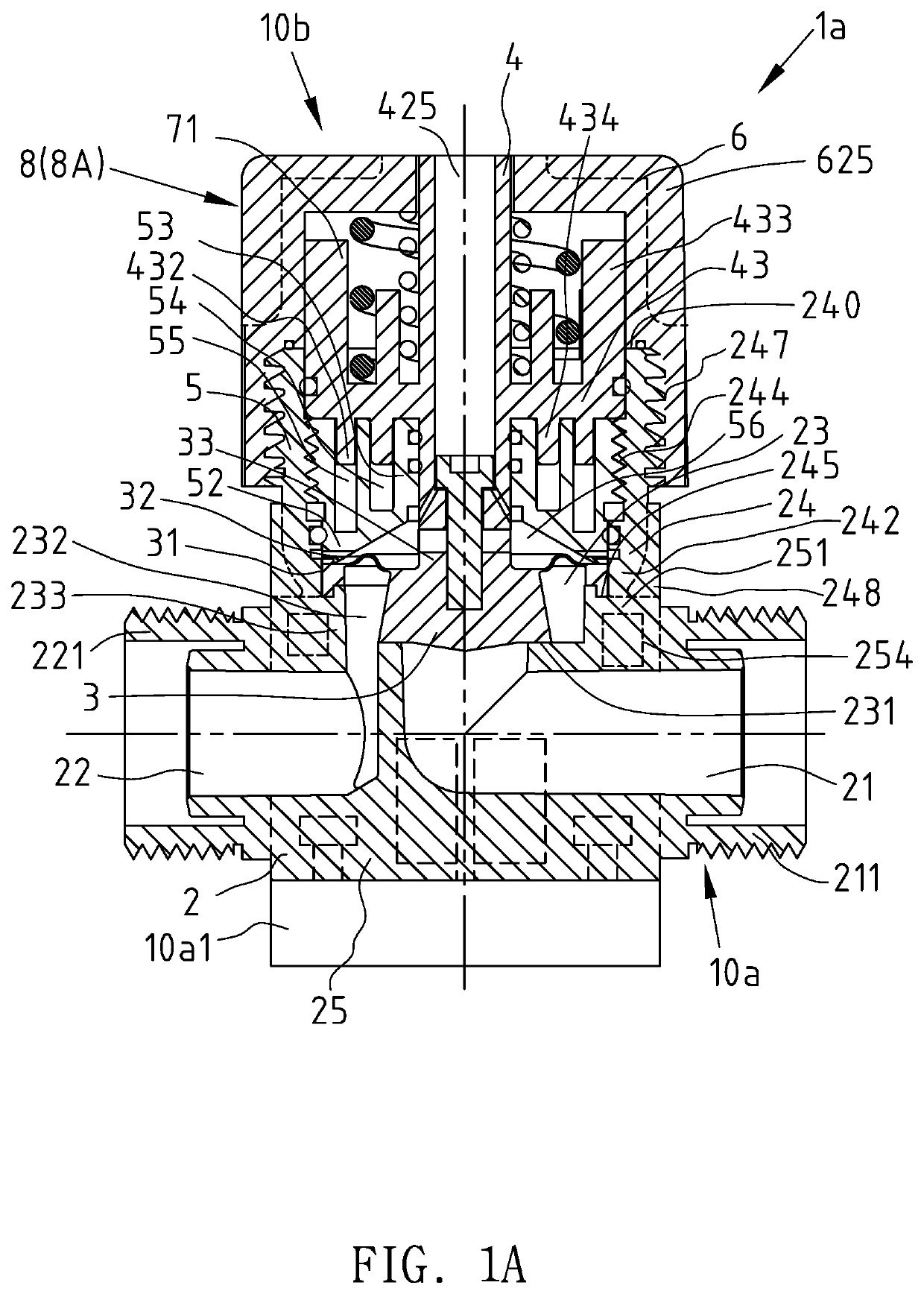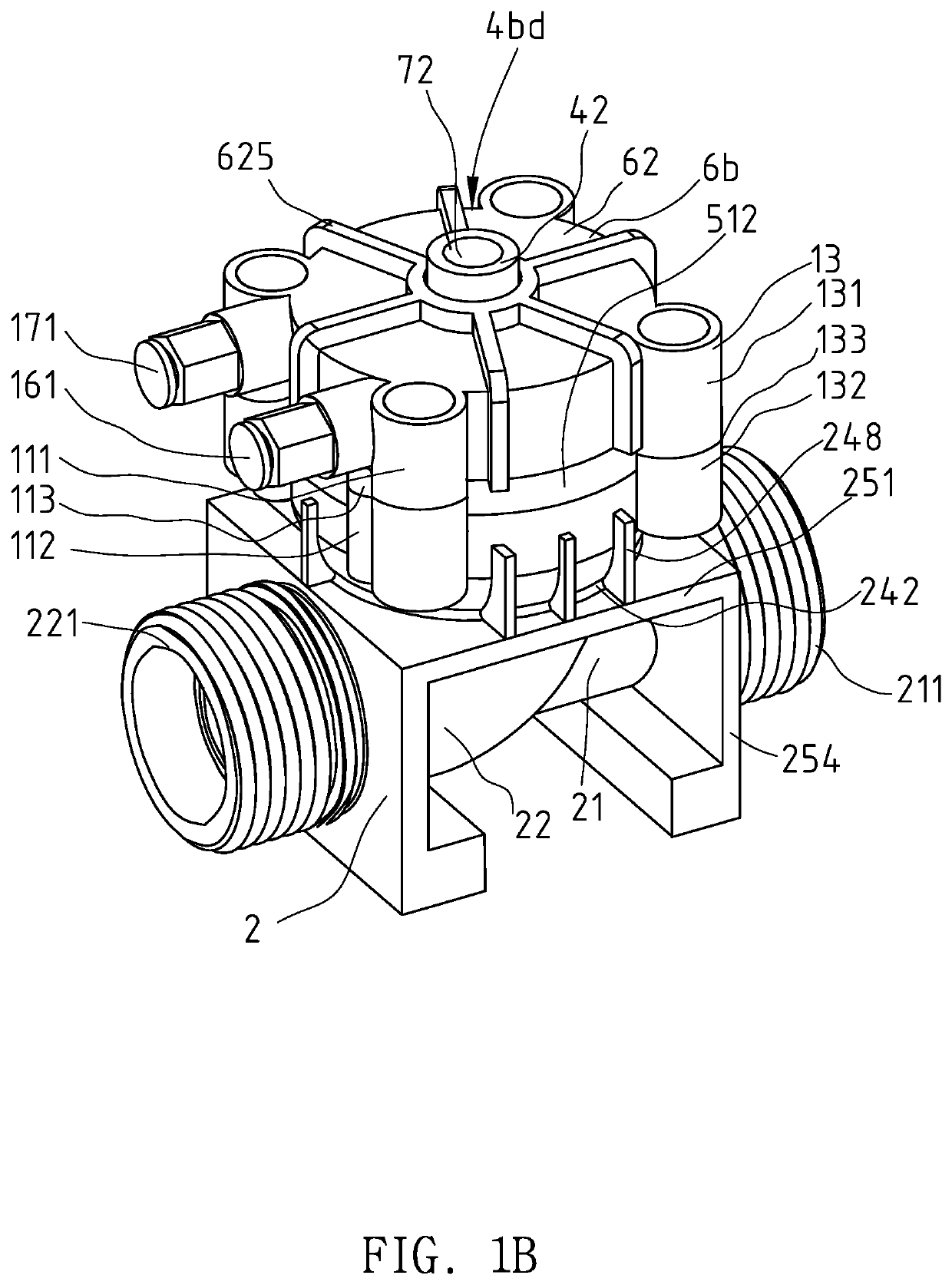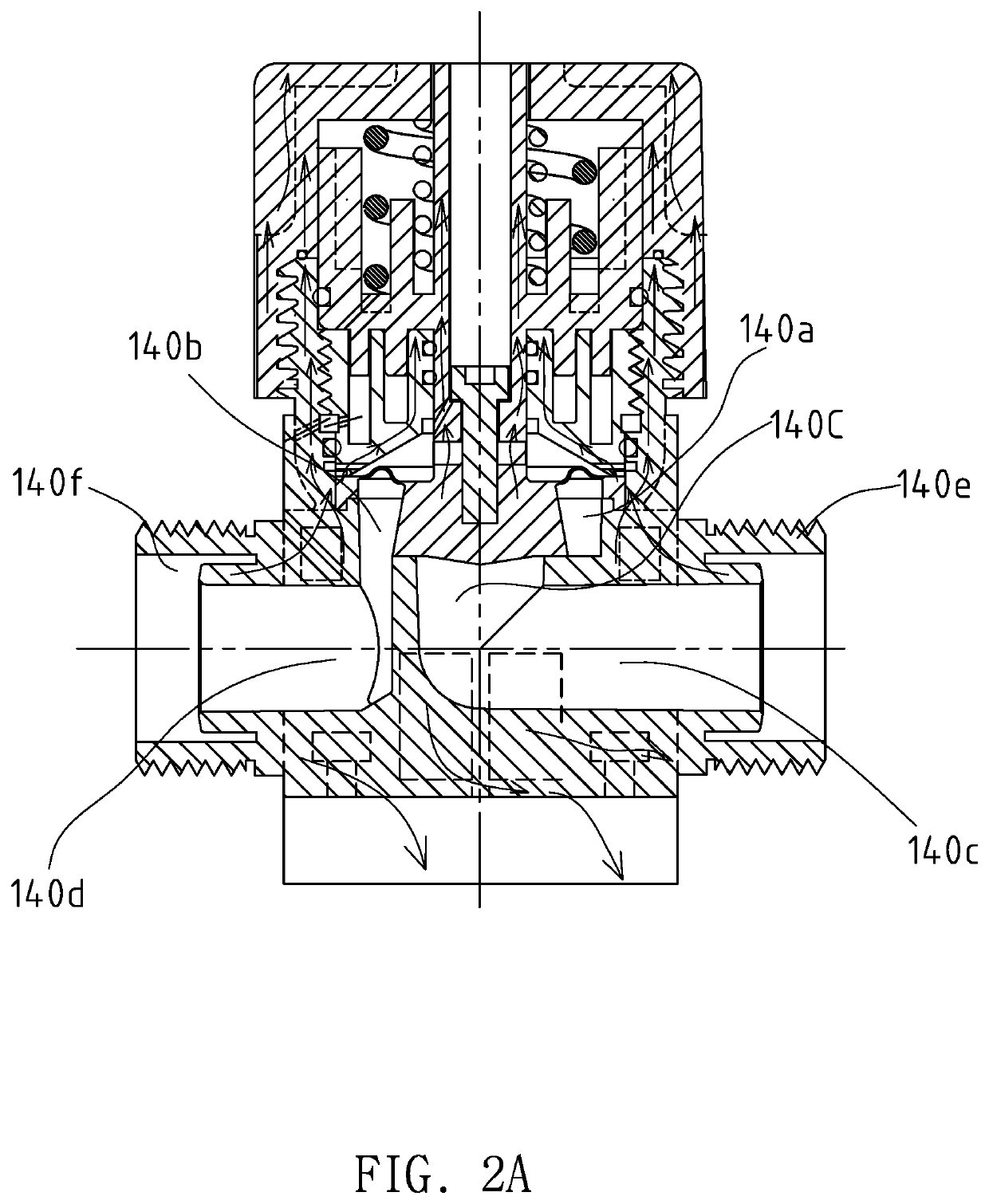Diaphragm Valve Structure
a diaphragm valve and structure technology, applied in the direction of diaphragm valves, engine diaphragms, valve housings, etc., can solve the problems of diaphragm leakage, high corrosive environment, diaphragm valves, etc., to improve dependability and durability, high structural strength, and high corrosive environment
- Summary
- Abstract
- Description
- Claims
- Application Information
AI Technical Summary
Benefits of technology
Problems solved by technology
Method used
Image
Examples
reference example 2
[0049]The 1996 Japanese Patent No. JPH08152078 (A) discloses a gas-Operated Valve, which is provided with a linear magnetic structure able to detect opening of a diaphragm. The structure in this reference patent is suitable for applications at normal temperature but is unsuitable for applications at high temperatures. However, the exterior exposed pipe connections of the structure have no inlet connection heat source areas or outlet connection heat source areas; the structure has relatively small inlet pipe heat source areas and outlet pipe heat source areas. Compared to other prior art structures, the present reference patent has the characteristic of having heat source areas that are relatively small. However, the inlet pipe and outlet pipe still have large accumulated thickness areas, which form heat transfer channels that directly connect with the annular portion of the square plate. The upper valve body of the present reference example uses threaded teeth to tighten on the oute...
reference example 3
[0055]The 1997 Japanese Patent No. JPH09217845 (A) discloses a Diaphragm Valve, and describes a normally closed diaphragm valve structure attached with shock absorbing springs. The structure in this reference patent is suitable for applications at normal temperature but is unsuitable for applications at high temperatures. Normally closed springs are fitted on the upper side of the piston to ensure the diaphragm is able to press down on the valve seat. And secondary springs fitted on the lower side of the piston enable the diaphragm to smoothly close when closing, which substantially reduce the possibility of the valve seat producing friction particles. The reference example 3 is suitable for use in normal temperature applications, and apart from resolving problems 1 to 4, it also resolves the above-described problems 5 and 6. Descriptions of scenarios to resolve problems 1 to 6 are provided below:
[0056]Problem 1: Heat transfer restriction. The structure has large accumulated thickne...
reference example 4
[0062]The 2015 Chinese Patent No. CN104633171 (A) discloses a Valve Apparatus, the structure of which is suitable for applications at normal temperatures but is unsuitable for applications at high temperatures. The valve structure has conductive material installed in the valve shaft center, and the conductive material is able to contact channeling liquid to remove static electricity on the diaphragm. When the valve structure is channeling nonconducting high-purity water or other nonconducting liquid, the nonconducting diaphragm and valve body will accumulate frictional static electricity; and when the high voltage static electricity on the diaphragm is discharged to the upper valve body, the diaphragm will be punctured and damaged. The conductive material on the valve shaft is generally a heat conductor, which easily transmits heat from the valve box to other structures, and, thus, an imperfect heat source separation design.
[0063]The 2010 Japanese Patent No. JP2010121689 (A) disclos...
PUM
 Login to View More
Login to View More Abstract
Description
Claims
Application Information
 Login to View More
Login to View More - R&D
- Intellectual Property
- Life Sciences
- Materials
- Tech Scout
- Unparalleled Data Quality
- Higher Quality Content
- 60% Fewer Hallucinations
Browse by: Latest US Patents, China's latest patents, Technical Efficacy Thesaurus, Application Domain, Technology Topic, Popular Technical Reports.
© 2025 PatSnap. All rights reserved.Legal|Privacy policy|Modern Slavery Act Transparency Statement|Sitemap|About US| Contact US: help@patsnap.com



